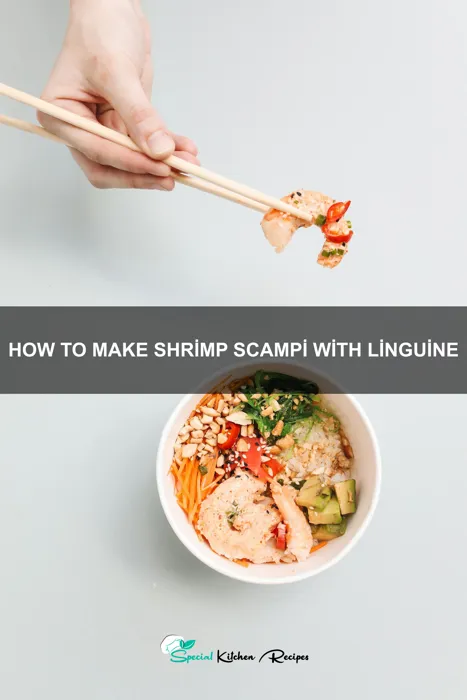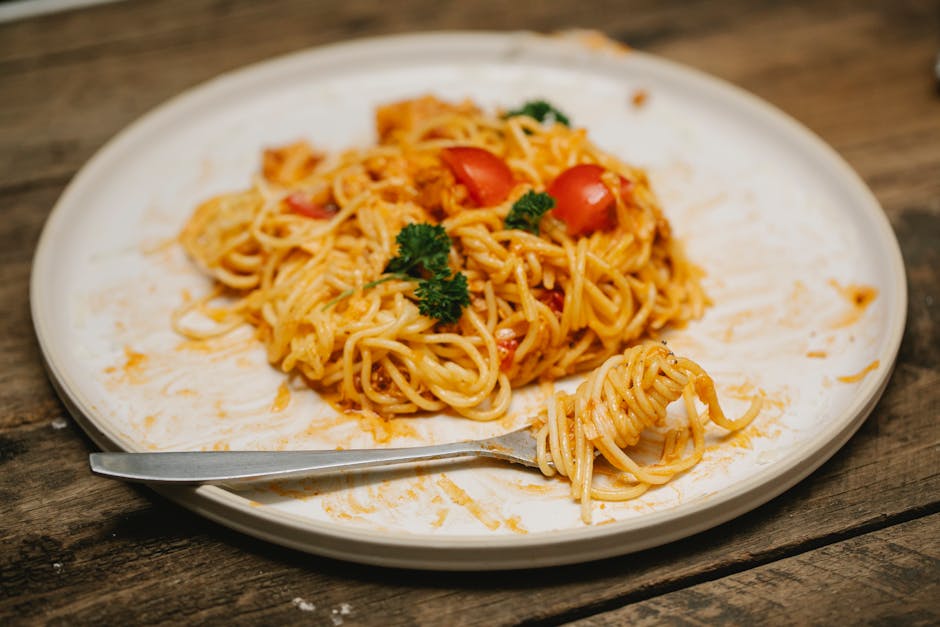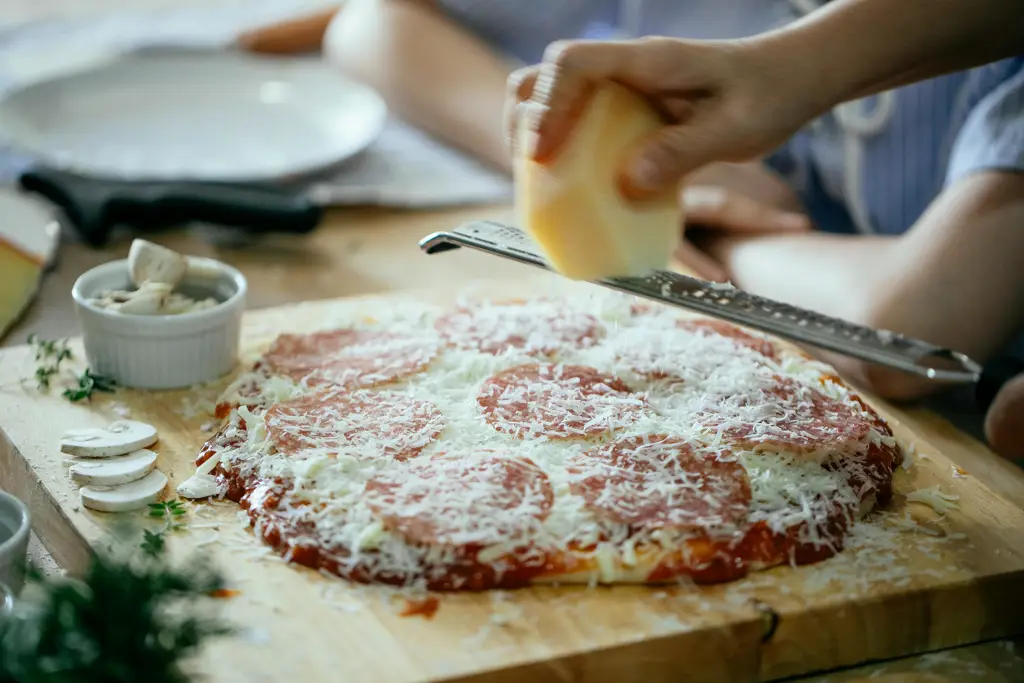Shrimp scampi, a seemingly simple dish of succulent shrimp tossed in garlic butter and served over pasta, boasts a surprisingly rich and flavorful history. While its exact origins are debated, most culinary historians agree that it likely emerged from the coastal regions of Italy, specifically the region of Campania, sometime in the 19th or early 20th century. Early versions probably eschewed the now-ubiquitous linguine, focusing instead on simpler preparations featuring the shrimp, garlic, butter, and perhaps a sprinkle of parsley or lemon. The dish’s straightforward elegance allowed it to quickly gain popularity, both within Italy and eventually internationally.
The scampi in the name is a bit of a misnomer. While often translated as shrimp, scampi actually refers to a type of Mediterranean prawn, specifically Nephrops norvegicus. However, the culinary term has become synonymous with shrimp, particularly in the United States, where shrimp scampi has become a staple restaurant dish and a popular home-cooked meal. Annual shrimp consumption in the US alone exceeds 1 billion pounds, highlighting the widespread love for this versatile crustacean. The dish’s adaptability also contributes to its enduring appeal; variations abound, incorporating ingredients like white wine, red pepper flakes, and various herbs to customize the taste.
Beyond its deliciousness, shrimp scampi holds cultural significance as a symbol of Italian-American cuisine. It represents the fusion of Italian culinary traditions with the readily available ingredients and preferences of the American palate. Its relatability, affordability, and relative ease of preparation have cemented it as a classic. Furthermore, its prominence on restaurant menus across the country speaks to its cultural impact; it’s a dish easily recognizable and enjoyed by a broad spectrum of the population. Today, learning to make shrimp scampi is not just about mastering a recipe, but about connecting with a culinary history that transcends borders and generations. This recipe will guide you through a delicious and authentic approach to this beloved dish.
Ingredients and Measurements
This recipe yields approximately 4 servings of delicious Shrimp Scampi with Linguine. Accurate measurements are crucial for achieving the perfect balance of flavors and textures. Use a kitchen scale for the most precise measurements, especially for the butter and garlic.
For the Shrimp:
- 1 pound (450g) large shrimp, peeled and deveined. Ensure the shrimp are completely thawed if frozen. Pat them dry with paper towels before cooking to promote better browning. Leaving the tails on is optional, but aesthetically pleasing.
For the Linguine:
- 1 pound (450g) linguine pasta. Choose a high-quality pasta for the best flavor and texture. Look for bronze-die pasta for a rougher surface that clings better to the sauce.
For the Scampi Sauce:
- 6 tablespoons (85g) unsalted butter. Use high-quality butter for the richest flavor. Do not substitute margarine.
- 6 cloves garlic, minced. Mince the garlic finely to prevent large, overpowering chunks in the sauce. A garlic press is helpful for consistent mincing.
- 1/4 cup (60ml) dry white wine. A crisp, dry white wine like Sauvignon Blanc or Pinot Grigio works best. If you prefer not to use alcohol, substitute with chicken broth.
- 1/4 cup (60ml) freshly squeezed lemon juice. Freshly squeezed lemon juice provides a brighter, more vibrant flavor than bottled.
- 1/4 teaspoon red pepper flakes (or more, to taste). Start with a small amount of red pepper flakes and adjust according to your spice preference.
- 1/4 cup (30g) chopped fresh parsley. Fresh parsley is essential for that bright, herbaceous flavor. Do not substitute dried parsley.
- Salt and freshly ground black pepper, to taste. Season generously throughout the cooking process. Taste and adjust seasoning as needed.
Optional additions: Consider adding a pinch of cayenne pepper for extra heat, or a tablespoon of chopped fresh basil for a different herbal note. Some recipes also call for a sprinkle of grated Parmesan cheese at the end, but this is a matter of personal preference.
Careful measuring of these ingredients will ensure that your Shrimp Scampi is a delicious success.
Mise en Place (Prep Work)
Before you even think about firing up the stove, meticulous preparation is key to a successful Shrimp Scampi. This stage, known as mise en place in culinary terms, ensures a smooth and efficient cooking process, resulting in perfectly cooked shrimp and flavorful pasta.
Begin by prepping your ingredients. For a serving of two, you’ll need approximately 1 pound of linguine. Check the package instructions for cooking time, as this will guide your overall timing. While the pasta water is coming to a boil, tackle the shrimp. Purchase 1 pound of large, raw shrimp, peeled and deveined. If you buy them pre-peeled and deveined, inspect them carefully to ensure all veins are removed. If you are peeling and deveining them yourself, do so efficiently – using a sharp paring knife makes this task much faster. Rinse the shrimp under cold water and pat them dry with paper towels. This step is crucial for achieving a nice sear during cooking.
Next, prepare your aromatics. Finely mince 4 cloves of garlic. Using a sharp knife prevents bruising the garlic, preserving its delicate flavor. If you’re sensitive to garlic’s intensity, you can reduce the amount to 2-3 cloves. Finely chop 1/4 cup of fresh parsley. Reserve a tablespoon for garnish, and add the rest to the scampi. You’ll also need 1/4 cup of dry white wine (a crisp Sauvignon Blanc or Pinot Grigio works well). Have this measured and ready in a small bowl or measuring cup.
Prepare your butter: You’ll need 1/2 cup (1 stick) of unsalted butter, cut into tablespoon-sized pieces. Cutting the butter into pieces allows it to melt evenly and quickly into the sauce. This ensures a smooth, creamy consistency, rather than a lumpy one. Finally, measure out 1/4 teaspoon of red pepper flakes (or more, to taste) and a generous pinch of salt and freshly ground black pepper. Having all the spices pre-measured prevents rushing and ensures even seasoning.
Important Note: Having all your ingredients prepped and measured out in separate bowls and containers will streamline the cooking process and prevent frantic searching mid-recipe. This is the essence of a successful mise en place, allowing you to focus on the cooking techniques rather than ingredient preparation.
Cooking the Linguine
Cooking the linguine perfectly is crucial for a successful shrimp scampi. Undercooked pasta will be gummy and unappetizing, while overcooked pasta will be mushy and fall apart. Aim for that ideal al dente texture – firm to the bite but not hard.
Begin by bringing a large pot of salted water to a rolling boil. Use at least 6 quarts of water for 1 pound of linguine. This ensures the pasta cooks evenly and doesn’t stick together. Adding salt is essential; it seasons the pasta from the inside out and enhances the overall flavor. Add about 2 tablespoons of kosher salt to the boiling water – taste the water; it should taste like the sea.
Once the water is boiling vigorously, add the 1 pound of linguine all at once. Stir gently to prevent the pasta from sticking to the bottom of the pot. Cook according to the package directions, usually around 8-10 minutes. However, don’t rely solely on the package instructions. Start checking for doneness a minute or two before the recommended time.
To test for doneness, use a pair of tongs to remove a strand of linguine from the pot. Bite into it; it should be tender but still offer a slight resistance to the bite – that’s the al dente stage. If it’s too soft, it’s overcooked. If it’s too firm, continue cooking for another minute and test again.
Reserve about 1 cup of the pasta cooking water before draining the linguine. This starchy water is incredibly valuable! It helps create a creamy sauce by binding the ingredients together. Drain the pasta thoroughly in a colander.
Immediately after draining, add the linguine to the prepared shrimp scampi sauce. Toss gently to coat the pasta evenly. If the sauce seems too thick, add a little of the reserved pasta water, a tablespoon at a time, until you achieve the desired consistency. The pasta should be well coated but not swimming in excess liquid.
Serve immediately. The shrimp scampi is best enjoyed hot and fresh, allowing the flavors to meld together beautifully. Enjoy!
Sautéing the Shrimp
This section details the crucial step of perfectly sautéing your shrimp for your Shrimp Scampi. Proper technique ensures tender, succulent shrimp that are beautifully cooked, not rubbery or overdone. We’ll be using 1 pound (450g) of peeled and deveined shrimp for this recipe. Ensure your shrimp are thoroughly patted dry with paper towels before starting this step. Excess moisture will prevent proper browning.
Heat 2 tablespoons of olive oil in a large skillet over medium-high heat. The oil should be hot enough that a drop of water sizzles immediately when added. This high heat is key to achieving a nice sear on the shrimp. Avoid overcrowding the pan; work in batches if necessary to ensure even cooking. If you overcrowd the pan, the shrimp will steam instead of sauté, resulting in a less flavorful and less appealing final product.
Add half of the shrimp (approximately 8-10 large shrimp, depending on size) to the hot skillet. Arrange them in a single layer, avoiding overlapping. Do not move the shrimp for at least 2-3 minutes to allow a beautiful golden-brown crust to develop on one side. This is essential for maximizing flavor development.
Once the underside is nicely browned, gently flip the shrimp using tongs. Sauté for another 2-3 minutes on the second side, until they are pink and opaque throughout. Avoid overcooking, as overcooked shrimp become tough and rubbery. Remember, they will continue to cook slightly from residual heat even after you remove them from the pan.
Remove the cooked shrimp from the skillet and set aside on a plate. Repeat the process with the remaining shrimp, adding more olive oil to the pan if necessary. Do not reuse the oil from the first batch if it’s excessively browned; this can impart a bitter taste. Once all the shrimp are cooked, set them aside while you prepare the final elements of your Shrimp Scampi.
Professional Tip: For extra flavor, consider adding a minced clove of garlic to the pan with the shrimp during the last minute of cooking. The garlic will infuse the shrimp with its aromatic essence. Be careful not to burn the garlic, as this can result in a bitter taste.
Once all your shrimp are beautifully sautéed and set aside, you’re ready to combine them with your delicious linguine and sauce for a truly unforgettable Shrimp Scampi.
Making the Scampi Sauce
The success of your shrimp scampi hinges on a perfectly balanced and flavorful sauce. This section details how to create a luscious scampi sauce that will elevate your dish to restaurant quality.
Begin by melting 4 tablespoons (1/2 stick) of unsalted butter in a large skillet over medium heat. Do not rush this process; you want the butter to melt gently and evenly. Avoid browning the butter, as this can impart a slightly burnt flavor that clashes with the delicate taste of the shrimp and garlic.
Once the butter is melted, add 4 cloves of minced garlic. Immediately reduce the heat to low to prevent the garlic from burning. Cook the garlic for about 1-2 minutes, stirring constantly, until it’s fragrant but not browned. Burning the garlic will result in a bitter sauce, so close attention to this step is crucial.
Next, pour in 1/2 cup of dry white wine. A crisp, dry white wine like Sauvignon Blanc or Pinot Grigio works best. Allow the wine to simmer for 2-3 minutes, allowing the alcohol to cook off and the flavors to meld with the garlic butter. This step adds depth and complexity to the sauce.
Now, stir in 1/4 cup of freshly squeezed lemon juice. This brightens the sauce and provides a necessary acidity to balance the richness of the butter. Taste the sauce at this point and adjust the seasoning. You may need to add a pinch of salt and freshly ground black pepper to your liking. Consider adding a pinch of red pepper flakes for a touch of heat, if desired.
Finally, stir in 2 tablespoons of chopped fresh parsley. The parsley adds a vibrant green color and a fresh, herbaceous note to the sauce. Do not add the parsley too early, as it will lose its bright green color and fresh flavor if cooked for too long. Remove the skillet from the heat and keep the sauce warm while you cook the shrimp.
Remember: The key to a great scampi sauce is patience and attention to detail. Don’t rush the cooking process, and adjust the seasoning to your personal preference. With a little care, you will create a sauce that is both delicious and impressive.
Combining Linguine and Shrimp Scampi
Once your linguine is perfectly cooked al dente and your shrimp scampi is prepared and fragrant, it’s time to bring them together for a delicious and satisfying meal. This crucial step requires careful attention to timing and temperature to ensure a harmonious blend of flavors and textures.
First, ensure your linguine is thoroughly drained but retains a slight sheen of moisture. This is crucial; overly dry pasta will absorb the scampi sauce too quickly, leaving it dry and lacking in flavor. Reserve about ½ cup of the pasta cooking water before draining; this starchy liquid will act as a binder, helping to emulsify the sauce and coat the pasta evenly.
Next, gently add the hot, cooked linguine to the pan containing the shrimp scampi. Don’t overcrowd the pan; if necessary, do this in two batches. Using tongs, toss the pasta and shrimp together, ensuring every strand is coated in the luscious scampi sauce. The residual heat from the pasta will help to slightly thicken the sauce.
Now, gradually incorporate the reserved pasta water, a tablespoon at a time. This is where the magic happens. The starch in the water will help create a creamy, clinging sauce that adheres perfectly to the pasta. Continue to toss gently, adding more pasta water as needed to achieve your desired consistency. Avoid adding too much water at once, as this can thin the sauce excessively.
Taste and adjust seasoning. You might need a pinch more salt, pepper, or even a squeeze of lemon juice to brighten the flavors. Remember, the taste should be balanced and harmonious, with the subtle sweetness of the shrimp complementing the savory garlic and butter sauce. Professional chefs often recommend tasting throughout the process to fine-tune the flavor profile.
Finally, serve immediately. Shrimp scampi with linguine is best enjoyed fresh, while the pasta is still warm and the sauce is creamy and flavorful. Garnish with freshly chopped parsley or a sprinkle of red pepper flakes for an extra touch of visual appeal and flavor. Avoid letting the dish sit for too long, as the pasta will continue to absorb the sauce and become dry.
Pro Tip: For an even richer and more flavorful dish, consider adding a tablespoon or two of grated Parmesan cheese during the final tossing stage. The cheese will melt into the sauce, adding a delightful salty and umami note.
Recommendations
For the best Shrimp Scampi experience, we highly recommend using fresh, high-quality shrimp. Look for shrimp that are firm, with a translucent appearance and a mild, ocean-fresh scent. Overcooking shrimp can make them tough, so ensure they are cooked just until pink and opaque. Don’t be afraid to experiment with the garlic; some prefer a more intense garlic flavor, while others prefer a subtler taste. Adjust the amount to your preference.
Serving suggestions are plentiful! Classic Shrimp Scampi is delicious on its own, but you can elevate it further. A sprinkle of freshly chopped parsley adds a pop of color and freshness. A squeeze of lemon juice right before serving brightens the flavors. Consider serving it with crusty bread to soak up the delicious garlic butter sauce. A simple side salad with a light vinaigrette cuts through the richness of the scampi.
Storage: Leftover Shrimp Scampi can be stored in an airtight container in the refrigerator for up to 3 days. Reheat gently over low heat, adding a splash of water or white wine if the sauce becomes too thick. Avoid microwaving, as it can make the shrimp rubbery.
Complementary Dishes: Pair your Shrimp Scampi with a crisp, dry white wine, such as Pinot Grigio or Sauvignon Blanc. A side of grilled asparagus or sauteed spinach complements the seafood beautifully. For a more substantial meal, serve it with a side of garlic bread or roasted vegetables.
Nutritional Information (per serving, approximate): Calorie count will vary based on the ingredients and portion size, but a typical serving of Shrimp Scampi with Linguine might contain approximately 400-500 calories. It’s a good source of protein from the shrimp and carbohydrates from the pasta. The nutritional content will also vary depending on the type and amount of butter used. For a healthier version, consider using a reduced-fat butter substitute or adding more vegetables to the dish. Always consult a nutrition calculator for precise values based on your specific recipe and ingredients.





